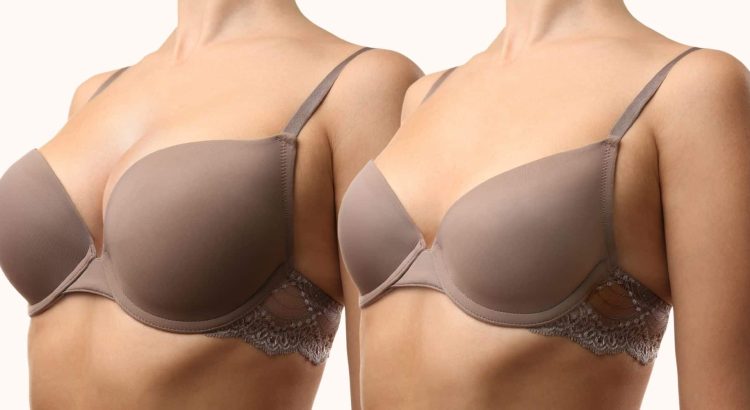Contents;
Overview Of Breast Reduction Aesthetics
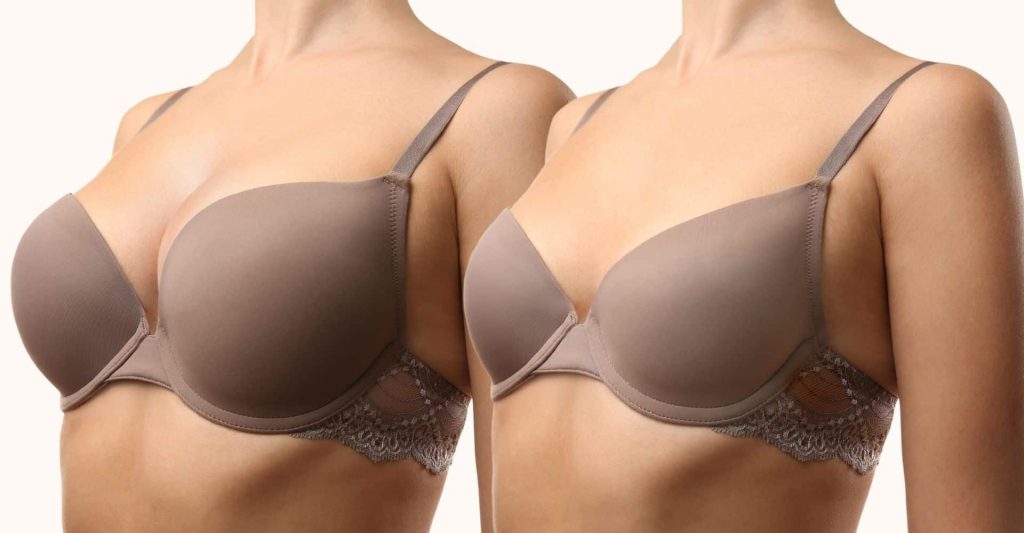
Breast reduction, also known as reduction mammaplasty, is a surgical procedure aimed at reducing the size and reshaping the breasts. It is often performed to alleviate physical discomfort caused by the weight and volume of large breasts. This procedure not only provides relief from back, neck, and shoulder pain, but it also helps improve overall body proportion and enhances a patient’s self-confidence and body image.
Benefits of Breast Reduction
There are numerous benefits associated with breast reduction surgery. Firstly, individuals who have undergone this procedure often experience relief from physical symptoms such as chronic pain, posture problems, and discomfort caused by bra straps digging into their shoulders. Secondly, breast reduction surgery brings about a more balanced and symmetrical appearance, improving the overall shape and proportion of the breasts. Moreover, it can enhance one’s self-esteem and body image, allowing individuals to feel more confident in their own skin.
Considerations Before Undergoing Breast Reduction
Before considering breast reduction surgery, it is essential to consult with a qualified plastic surgeon. During the initial consultation, the surgeon will evaluate your overall health and assess your breast size, shape, and symmetry. They will also discuss your expectations and goals for the procedure. It is important to have open and honest communication with your surgeon to ensure that the desired outcome can be achieved through breast reduction surgery.
The Breast Reduction Procedure
When it comes to breast reduction surgery, various techniques can be employed depending on the patient’s unique circumstances. The surgeon will make incisions to remove excess breast tissue, fat, and skin. The size and shape of the incisions will depend on the extent of reduction required. After removing the excess tissues, the surgeon will reshape the breasts and reposition the nipple and areola complex for a more aesthetically pleasing result. The incisions are then closed using sutures or surgical glue, and a dressing or surgical bra is applied to support the newly shaped breasts.
Recovery and Results
Following breast reduction surgery, patients may experience some discomfort, swelling, and bruising. It is important to follow the surgeon’s post-operative instructions, including wearing a supportive bra, avoiding strenuous activity, and attending follow-up appointments. The recovery period can vary from individual to individual but generally takes a few weeks. During this time, it is crucial to give your body the necessary rest and care it needs to heal properly. Once fully healed, patients can expect smaller, lifted breasts with improved shape and symmetry.
Initial Consultation And Evaluation

When considering a breast reduction procedure, it is important to begin with an initial consultation and evaluation. This initial step allows the patient and the plastic surgeon to discuss the goals, expectations, and any concerns regarding the procedure. The consultation is also an opportunity for the surgeon to determine the patient’s suitability for a breast reduction and to develop an individualized surgical plan.
During the initial consultation, the plastic surgeon will evaluate the patient’s overall health and medical history. This assessment includes discussing any previous surgeries, current medications, and any existing medical conditions that may impact the surgery or the recovery process. It is imperative for the patient to provide accurate and thorough information to ensure the safety and success of the procedure.
In addition to the medical evaluation, the plastic surgeon will also conduct a physical examination of the breasts. This examination helps the surgeon assess the breast size, shape, and symmetry, as well as the quality of the skin and the position of the nipples and areolas. The surgeon may also take photographs or measurements for reference during the surgical planning process.
During the consultation, the plastic surgeon will discuss the patient’s specific goals and expectations for the breast reduction. It is essential for the patient to clearly communicate their desired breast size and shape. This conversation allows the surgeon to manage the patient’s expectations and provide realistic outcomes based on the individual’s unique anatomy and the limitations of the procedure. The surgeon may also discuss potential risks and complications associated with the surgery.
- Breast reduction is a surgical procedure that aims to reduce the size and reshape the breasts.
- Initial consultation and evaluation is an important step before undergoing a breast reduction procedure.
- The consultation involves discussing the patient’s goals, evaluating their medical history, and conducting a physical examination of the breasts.
| Pros | Cons |
|---|---|
| Improved appearance and self-confidence | Risks and complications associated with surgery |
| Relief from physical discomfort, such as back and neck pain | Potential scarring and changes in nipple sensation |
| Enhanced ability to participate in physical activities | Recovery time and temporary limitations on daily activities |
Surgical Techniques For Breast Reduction

When it comes to breast reduction surgery, there are several surgical techniques that can be used depending on the patient’s unique needs and goals. The main objective of these techniques is to remove excess breast tissue and reshape the breasts to achieve a more proportionate size and desirable shape. One common technique used is the anchor or inverted T-shaped incision. This technique involves making an incision around the areola, extending vertically down the breast, and horizontally along the natural crease beneath the breast. This allows the surgeon to remove excess tissue and reshape the breast effectively.
Another technique that may be used is the vertical or lollipop incision. This technique involves making an incision around the areola and vertically down the breast, eliminating the need for a horizontal incision under the breast. The vertical incision technique is often preferred by patients who have moderate breast sagging or desire minimal scarring. The surgeon can remove excess breast tissue and reshape the breast to achieve a lifted and more youthful appearance.
In some cases, a technique known as the keyhole or donut incision may be used. This technique involves making a circular incision around the areola, similar to a donut shape. The keyhole incision is best suited for patients with mild to moderate breast sagging and requires less tissue removal compared to other techniques. This technique can result in minimal scarring and provide patients with natural-looking results.
- Some other techniques include liposuction-assisted breast reduction and minimal scar techniques such as the vertical scar technique, short scar technique, or scarless technique. These techniques may be suitable for select patients based on their individual needs and goals.
| Surgical Technique | Description |
|---|---|
| Anchor or Inverted T-shaped Incision | Makes an incision around the areola, extending vertically down the breast and horizontally along the natural crease beneath the breast. |
| Vertical or Lollipop Incision | Makes an incision around the areola and vertically down the breast, eliminating the need for a horizontal incision under the breast. |
| Keyhole or Donut Incision | Makes a circular incision around the areola, similar to a donut shape. |
It is important to note that the choice of surgical technique will depend on various factors, including the patient’s breast size, shape, and desired outcome. During the initial consultation with a qualified plastic surgeon, they will evaluate the patient’s unique situation and discuss which surgical technique may be most suitable. The surgeon will also explain the potential risks, benefits, and expected recovery process associated with each technique. By choosing an experienced and skilled surgeon, patients can have confidence in achieving their desired breast size and shape through the appropriate surgical technique for breast reduction.
Anesthesia And Incision Placement
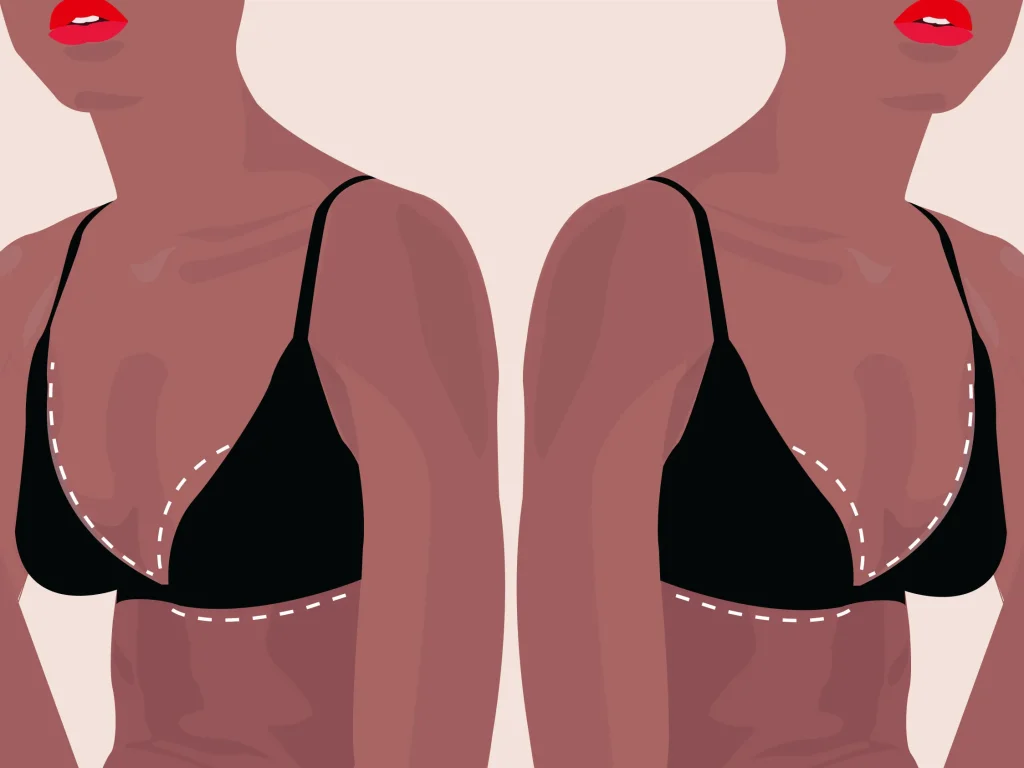
When it comes to undergoing a breast reduction procedure, two crucial factors come into play: anesthesia and incision placement. These factors play a significant role in ensuring a safe and successful surgery. In this blog post, we will explore the importance of anesthesia during breast reduction and the different options available. We will also delve into the various incision placement techniques commonly used in this transformative procedure.
First and foremost, anesthesia is administered to minimize any discomfort or pain during the breast reduction surgery. It allows the patient to remain comfortable and unconscious throughout the procedure. There are typically three types of anesthesia used for breast reduction surgeries: general anesthesia, local anesthesia, and intravenous sedation. The choice of anesthesia depends on multiple factors, including the patient’s medical history, surgeon’s recommendation, and the complexity of the procedure.
General anesthesia is the most common type used during breast reduction surgeries. It involves administering medications to induce complete unconsciousness and provide pain relief. This ensures that the patient remains unaware and experiences no pain during the surgery. Local anesthesia, on the other hand, involves numbing only the targeted area with the use of anesthetic agents. This type of anesthesia may be used in combination with intravenous sedation to keep the patient relaxed and comfortable.
| Anesthesia Type | Description |
|---|---|
| General Anesthesia | Administered to induce complete unconsciousness for pain relief. |
| Local Anesthesia | Numbs only the targeted area, often used in combination with intravenous sedation. |
| Intravenous Sedation | Administered to keep the patient relaxed and comfortable during the surgery. |
Now let’s shift our focus to incision placement. The location and length of the incisions play a crucial role in achieving optimal results from a breast reduction procedure. Incision placement will vary depending on the patient’s individual needs, breast size, and desired outcome. There are three common incision techniques used in breast reduction: anchor incision, lollipop incision, and vertical incision.
The anchor incision is also known as the inverted-T incision. This technique involves making an incision around the areola, vertically down to the crease of the breast, and horizontally along the breast crease. This incision pattern is typically utilized for significant reductions or when a significant lift is required. The lollipop incision involves an incision around the areola and vertically down to the breast crease. It is often used for moderate reductions. Lastly, the vertical incision technique involves an incision around the areola and vertically down to the breast crease, omitting the horizontal incision along the breast crease. This technique is suitable for smaller reductions and can result in less scarring.
In conclusion, the administration of anesthesia and the placement of incisions are vital aspects of a successful breast reduction procedure. The choice of anesthesia ensures the patient’s comfort and pain-free experience during the surgery. The different incision placement techniques allow surgeons to tailor the procedure according to the patient’s needs and desired outcome. Remember to consult with a board-certified plastic surgeon to determine the most suitable anesthesia type and incision technique for your specific case.
Breast Tissue And Skin Removal
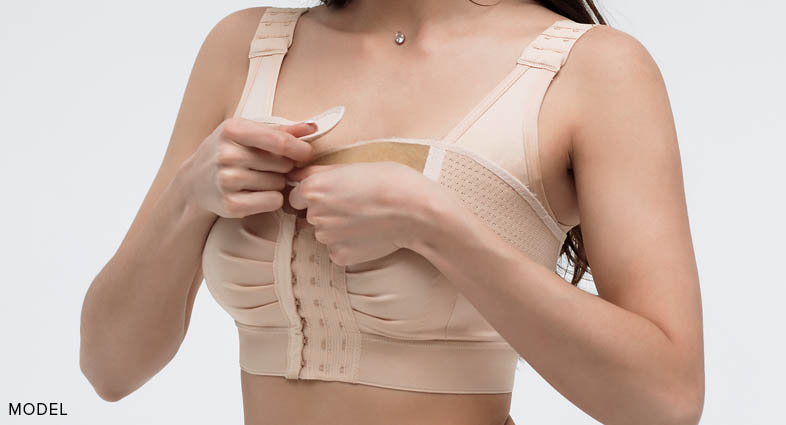
Breast tissue and skin removal is a crucial step in the breast reduction surgery process. The main aim of this procedure is to reduce the volume and weight of the breasts to achieve a more proportionate and aesthetically pleasing shape. During the surgery, excess glandular tissue, fat, and skin are removed to reshape and contour the breasts.
Breast tissue removal: The surgeon will carefully remove the excess breast tissue to reduce the size of the breasts. This is typically done through incisions made around the areola and sometimes along the lower crease of the breast. The amount of tissue removed depends on each individual’s specific needs and desired outcome. The surgeon will take into consideration the patient’s body frame, breast size, and symmetry.
Skin removal: In addition to removing breast tissue, excess skin is also eliminated during the breast reduction surgery. This is necessary to achieve a more lifted and youthful appearance. The surgeon will carefully trim the excess skin and reshape the remaining skin to fit the new breast size and contour. This step is crucial in achieving a natural-looking result and ensuring that the breasts are not only smaller but also firmer.
Nipple repositioning: As part of the breast reduction surgery, the nipples are also repositioned to a higher and more proportionate location on the breasts. This is done by making small incisions around the areola and shifting the nipple to its new position. Depending on the individual’s needs and the surgical plan, the plastic surgeon may also resize and reshape the areola to achieve a more balanced and aesthetically pleasing appearance.
Closing the incisions and recovery process: After the breast tissue and skin removal, the surgeon will carefully close the incisions with sutures. The incision lines are typically hidden within the natural contours of the breasts and will fade over time. Following the surgery, patients will be provided with post-operative instructions and guidelines for the recovery process. It is important to follow these instructions for a smooth and successful recovery. The recovery period may vary for each individual, but most patients can expect some swelling, bruising, and discomfort initially. It is advisable to avoid strenuous activities and heavy lifting for a few weeks after the surgery to promote proper healing.
Nipple And Areola Repositioning
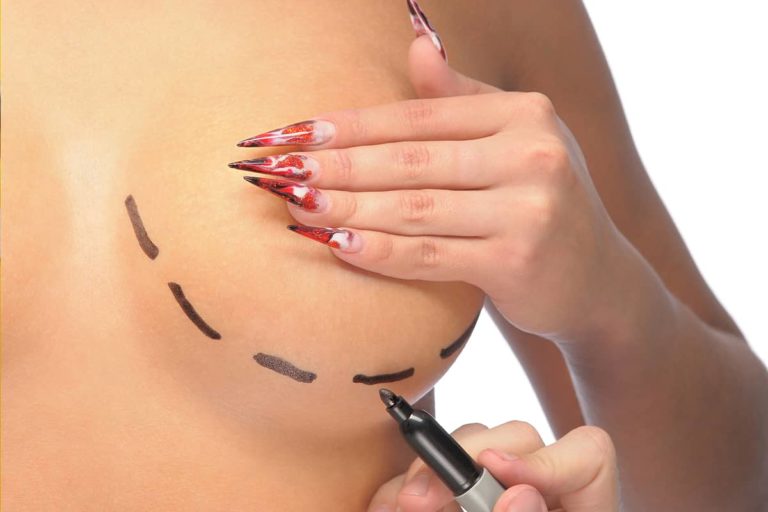
When considering a breast reduction procedure, it is important to understand all aspects of the surgery, including nipple and areola repositioning. For many women seeking breast reduction, the size and position of their nipples and areolas can be a source of concern or dissatisfaction. During the breast reduction procedure, the surgeon will address these aesthetic concerns by repositioning the nipples and areolas to create a more balanced and pleasing appearance.
Repositioning the nipples and areolas is an integral part of achieving the desired results in breast reduction surgery. The surgeon will carefully assess the position and size of the nipples and areolas in relation to the new breast shape and size. Depending on individual factors, such as breast size, surgeon preference, and patient goals, the nipple and areola may be repositioned higher on the breast mound.
This repositioning is achieved by carefully removing the skin around the areola and then shifting its position to the desired height. The surgeon will take into consideration factors such as the distance from the new inframammary fold, the natural contour of the breast, and the overall proportion of the breast to create an aesthetically pleasing outcome.
| Breast Reduction Surgical Techniques |
|---|
| Nipple and Areola Repositioning |
| Skin and Breast Tissue Removal |
| Anesthesia and Incision Placement |
By repositioning the nipples and areolas, the surgeon can create a more youthful and natural appearance to the breasts. This can help achieve a more proportionate result, particularly for women with excessively large or sagging breasts. Additionally, repositioning the nipples and areolas can help to correct asymmetry and improve the overall shape and contour of the breasts.
It is important to note that nipple sensation may be affected following breast reduction surgery, including repositioning of the nipples and areolas. While the majority of patients experience some temporary changes in sensation, this typically resolves over time. In rare cases, permanent changes in nipple sensation may occur. However, most women find that the benefits of breast reduction, including improved physical and emotional well-being, far outweigh any potential changes in sensation.
Closing The Incisions And Recovery Process
After undergoing a breast reduction surgery, one of the most important steps in the process is closing the incisions and allowing for a smooth recovery. Closing the incisions is crucial for proper healing and minimizing the risk of infection or complications. The recovery process following a breast reduction surgery is also an important aspect that needs to be understood and followed diligently for optimal results and a comfortable healing experience.
Once the necessary adjustments and reshaping of the breasts have been made during the breast reduction surgery, the surgeon will carefully close the incisions using sutures or surgical tape. The technique used will depend on the individual patient and the surgeon’s preference. The incisions are closed in layers to ensure proper healing and support for the newly shaped breasts. It is important to keep the incisions clean and dry during the healing process to minimize the risk of infection.
After the incisions have been closed, a supportive surgical bra or compression garment will be placed to provide support and minimize swelling. This garment should be worn as directed by the surgeon to maintain the shape and position of the breasts. It is important not to remove or adjust the garment without the guidance of the surgeon. Following the surgery, patients may experience some discomfort, swelling, and bruising, which is normal and can be managed with pain medication prescribed by the surgeon.
BREAST AESTHETICS
The Benefits of Breast Lift Surgery (Mastopexy)
Breast Aesthetics Recovery Process
All Details of Breast Aesthetics
